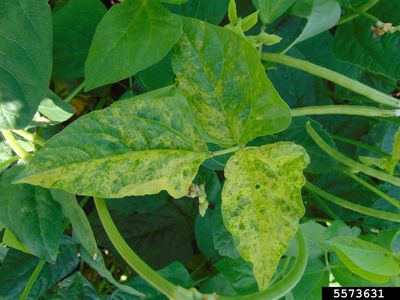What is Southern Pea Mosaic Virus?
Mosaic virus in southern peas may be caused by several viruses which may found alone or in combination with others. Some southern peas are more susceptible to certain viruses then others. For example, the pinkeye purple hull is extremely susceptible to black-eye cowpea mosaic virus. Other viruses that commonly afflict southern peas include cowpea aphid-borne mosaic virus, common bean mosaic virus and many others. It isn’t possible to determine exactly which virus is causing the disease based on symptoms alone; a laboratory test must be done to determine the viral identity.
Symptoms of Southern Peas with Mosaic Virus
While it may not be possible to exactly identify the causal virus without lab testing, it is possible to determine if the plants likely have mosaic virus since the symptoms, regardless of the virus, are the same. Mosaic virus produces a mosaic pattern on plants, an irregular light and dark green pattern on the foliage. Depending upon the causal virus, the leaves may become thickened and malformed, similar to damage caused by hormone herbicides. Another cause for mosaic patterns on foliage may be a nutrient imbalance. Mosaic patterning is most often seen on young leaves. Additionally, infected plants may become stunted and form distorted pods.
Managing Mosaic Virus of Southern Peas
While there is no effective control, you can manage the disease through preventative measures. Some peas are more susceptible to certain mosaic viruses than others. Plant resistant seeds when possible and seed that has been certified and treated with a fungicide. Rotate the southern pea crop in the garden and plant in a well-draining area. Avoid overhead watering. Remove any pea or bean detritus from the garden post-harvest, as some pathogens overwinter in such debris.
